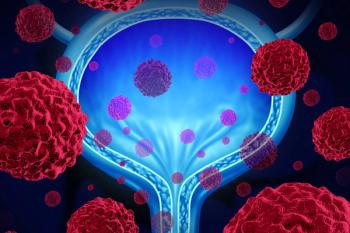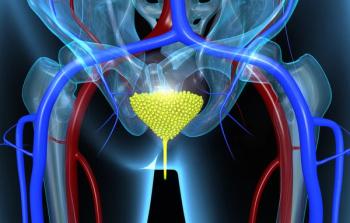
What Immunotherapy Combination Is Best in Metastatic Bladder Cancer?
Extended follow-up from the CheckMate 032 trial showed strong results with three different immunotherapy regimens involving nivolumab and ipilimumab in patients with previously treated metastatic urothelial carcinoma.
Extended follow-up from the CheckMate 032 trial showed strong results with three different immunotherapy regimens involving nivolumab and ipilimumab in patients with previously treated metastatic urothelial carcinoma.
“Recently, systemic immunotherapy has become the standard of care for many patients with previously treated metastatic urothelial carcinoma,” said
The study had three cohorts. In the NIVO3 cohort, 78 patients received nivolumab monotherapy at a dose of 3 mg/kg; 104 patients in the NIVO3+IPI1 cohort received the same nivolumab dose plus ipilimumab 1 mg/kg; and in the NIVO1+IPI3 cohort, 92 patients received nivolumab 1 mg/kg and ipilimumab 3 mg/kg. Previous reports showed response rates of approximately 26% in the first of those two cohorts, with only a preliminary outcome regarding the third.
All patients in the trial had progressed after at least one prior platinum-based therapy. Rosenberg said the patients in the trial were slightly younger than average age for this malignancy, but otherwise were relatively representative. Most patients in all three cohorts were male (69%, 78%, and 80%, respectively), and just over half in each cohort had programmed death ligand 1 (PD-L1) expression of < 1%. The majority of patients had received at least two prior chemotherapy regimens.
Similar to the previous reports, the confirmed objective response rate with NIVO3 was 25.6%, and with NIVO3+IPI1 it was 26.9%. With NIVO1+IPI3, the confirmed ORR was 38.0%, and Rosenberg said response rates have tended to rise over time, so this might go up.
In the NIVO3+IPI1 group, 6.5% had a complete response, 31.5% had a partial response, and 25.0% had stable disease, while 21.7% had progressive disease.
The median time to response in the three cohorts was 2.0 months, 1.4 months, and 1.4 months, respectively, and the median duration of response was 30.5 months, 22.3 months, and 22.9 months, respectively; 66% of the NIVO3+IPI1 group had an ongoing response.
Though Rosenberg stressed the estimate may change as follow-up extends further, the median overall survival in the three groups was 9.9 months, 7.4 months, and 15.3 months, respectively.
Patients with higher PD-L1 expression fared better in the NIVO3+IPI1 group. The ORR was 58.1% in the group with PD-L1 expression ≥ 1%, compared with 23.8% in those with PD-L1 expression < 1%. The difference was less pronounced in the other two groups.
Grade 3/4 treatment-related adverse events occurred in 27%, 31%, and 39% of the three groups. Among the most common such adverse events were diarrhea, and elevated ALT and AST levels.
“With extended follow-up, NIVO3, NIVO3+IPI1, and NIVO1+IPI3 regimens demonstrated sustained efficacy in patients with previously treated metastatic urothelial carcinoma,” Rosenberg concluded. “These results support the
Cora N. Sternberg, MD, of the San Camillo and Forlanini Hospitals in Rome, discussed the study for ESMO. “This combination of NIVO1+IPI3 is a very promising combination,” she said, though she stressed this was not a randomized trial and it is difficult to compare across trials. “There is a 38% response rate, which is highly encouraging.” She also questioned whether PD-L1 is the right marker to use to predict response. “More detailed interrogation of tumors beyond just PD-L1 clearly is what is needed for these patients.”
Newsletter
Stay up to date on recent advances in the multidisciplinary approach to cancer.


















































































